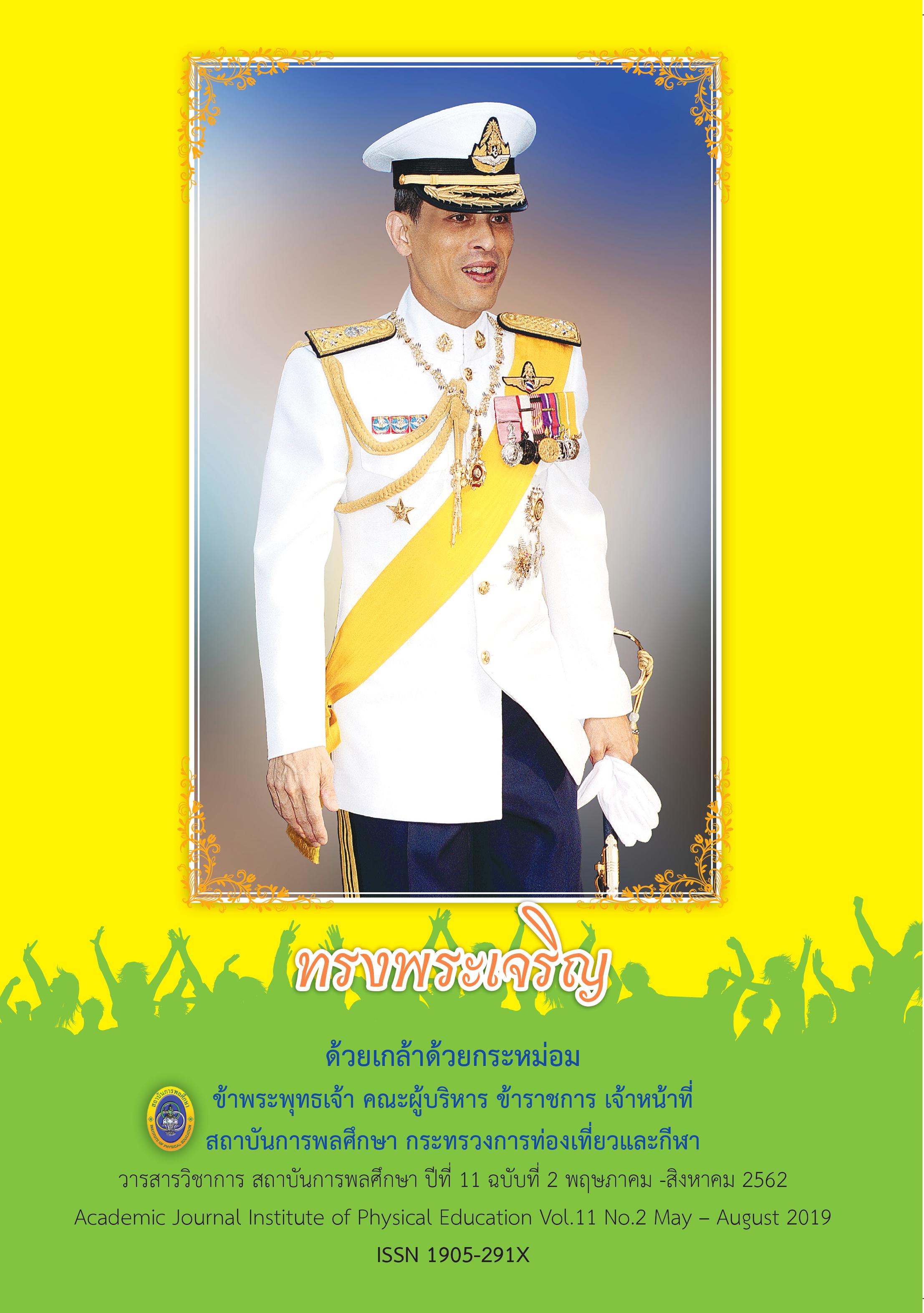A COMPARISON OF THE PHYSICAL FITNESS OF PRIMARY SCHOOL STUDENTS IN BANGKOK METROPOLIS
Main Article Content
Abstract
In this paper, the researcher compared the physical fitness of selected primary school students enrolled in the academic year 2016 at schools located in different jurisdictions in Bangkok Metropolis. Using the multistage random sampling method, the researcher selected a sample population consisting of 4,723 students: 2,337 male students and 2,386 female students enrolled in primary schools under the jurisdiction of Bangkok Metropolis Primary Educational Service Area Office (BMPESAO); Bangkok Metropolitan Administration (BMA); and the Office of the Private Education Commission (OPEC). Using a physical fitness test
provided by the Department of Physical Education, male and female students between the ages of seven and twelve were tested. The test consisted of the following: (1) standing long jump; (2) grip strength; (3) flexibility; (4) 30-second sit-ups; and (5) 10-meter timed shuttle run. Using techniques of descriptive statistics, the researcher analyzed the data collected in terms of mean (M) and standard deviation (SD). In addition, the researcher employed the one-way analysis of variance (ANOVA) technique and Scheffé’s multiple comparison method.
Findings are as follows:
Analysis of results based on applications of Scheffe’s multiple comparison method showed the following in regard to the overall physical fitness of students in the three
jurisdictions:
The schools under the jurisdiction of OPEC exhibited an M at a higher level than those in the other two jurisdictions in respect to eight comparisons, viz., Prathom Sueksa One female students; Prathom Sueksa Three male and female students and Prathom Sueksa Five female students. The schools under the jurisdiction of BMA showed an M at a higher level than the other two jurisdictions in three comparisons, viz., Prathom Sueksa Five male students and Prathom
Sueksa Six male students. The schools under the jurisdiction of BMPESAO displayed an M at a higher level than the other two jurisdictions in one comparison, viz., Prathom Sueksa Two female students.
However, the physical fitness of students at different time periods may change. The time period in which this research investigation was completed was during the academic year 2016. Therefore, under current conditions the physical fitness of the members of the sample population may change in accordance with the context found at each school in the different jurisdictions.
Article Details
The published article is a copyright of the Academic Journal of Thailand National Sports University. The passage appeared in each article in this academic journal is a perspective of each author which is not related to the journal. Each author is required to be responsible for all components of his/her own article. If there are any mistakes, each author must be responsible for those mistakes on his/her own.
References
Alberta Learning . (2000). A PROGRAM RATIONALE AND PHILOSOPHY. Retrieved from https://education.alberta.ca/media/482114/elemart.pdf
Boobchom Srisa-Ardi. (2002). Preliminary Research. Bangkok: Suriwitthayasarn. [in thai].
Charoentasn Chintanaseri. (1995). Sport Science for Coaches and Athletes. Sports Authority of Thailand. Bangkok: Graduate School. Srinakharinwirot University. [in thai].
Department of Physical Education. (2005). The Physical Fitness Norms for 7-12 old Primary Students. Bangkok: Department of Physical Education. [in thai].
Department of Physical Education. (2005). The Physical Fitness Test Handbook. Bangkok: Department of Physical Education. [in thai].
Department of Physical Education. (2016). Good Physical Fitness because of nutrition Bangkok: Department of Physical Education. [in thai].
National curriculum in England. (2013). Physical education programmes of study: key stages 1 and 2. Retrieved from https://www.gov.uk/government/ uploads/system/uploads/attachment_data/file/335186/PRIMARY_national_curriculum_-_ English_220714.pdf


